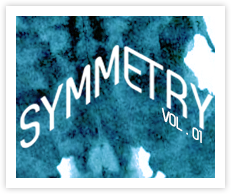

PR Creativity: Working Within your Limits
Barbara Emodi // November 14, 2011

This is strictly an opinion piece.
Here is my opinion: the practice of public relations, like so many deceptively complex endeavors, is one so many think anyone can do, and so often is not done well at all.
I am sure you know what I mean.
How many times have you seen a news story and thought to yourself, “Where are their PR people?” How many crises have you watched unfold and thought to yourself “What are they thinking?” Tell me how often you have watched a communications campaign unfold and thought to yourself “I could have done better! I would have talked to people first”.
Is it just me who has these thoughts?
I doubt it.
So, what’s going wrong? Why does practice, in practice, seem to default to the routine and not to the excellent? Where are Grunig and Hunt when we need them?
I think part of the issue is PR busy-ness. In the public relations workplace the vehicles and tactics of practice–the newsletters, website updates, news releases, speeches, media calls and press conferences–can become consumptive of time and talent, so fully occupying. Swamped, practitioners forget the illuminations of theory, and forget to stop and ask themselves if, as they do it right, they are in fact still doing the right thing at all.
So often the first victim of relentless activity and performance is creativity.
This is not a good thing. In fact I would argue that creativity is the core of outstanding practice. Creativity understands that it’s not business as usual but business unusual that makes the difference. It understands that meaningful communication in the contested space requires not just thinking outside the box but living there–where the view is clearer, the air is fresher, and the contributions are of original value.
I would argue that you can’t do this work unless you have met, nurtured, and channeled your own creativity. And I would argue that any practitioner has creativity to access. Through different doors maybe, but along some identifiable routes.
I feel the best of these, and one that runs counter to popular notions, lies in limits. Creative activity by my definition involves visiting new territory. After all, why travels when all you need is at home? Limitations force practitioners to improvise, to collaborate, to ask more questions, to find new ways. To become creative, even when they don’t feel like it much.
So cut back and see what happens next. Consider a communication campaign that would allow only word-of-mouth contact. Think of a message that uses only one word. Communicate to 10,000 employees and do not send out one memo, email, or newsletter.
Tough to do, unless you get creative.
